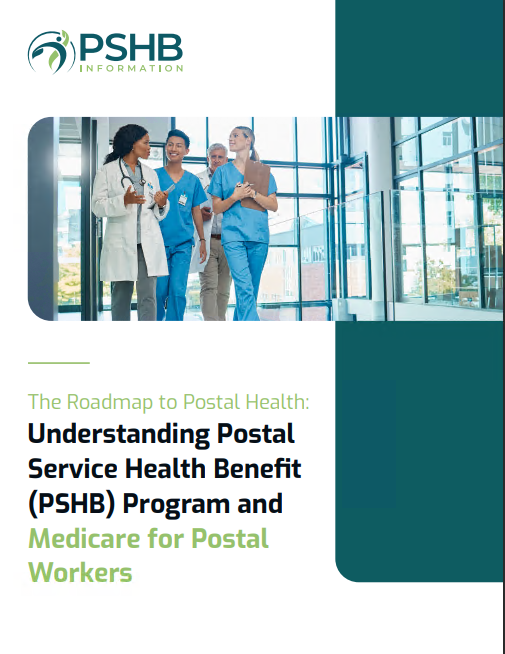Key Takeaways
-
Understanding PSHB plan options and costs can help you choose the right health coverage for your needs.
-
Comparing premiums, coverage, and out-of-pocket costs is essential for aligning your plan with your budget.
Postal Service Health Benefits: What You Need to Know
If you’re navigating the Postal Service Health Benefits (PSHB) program in 2025, you’re probably weighing the costs and coverage options. With changes from the Federal Employees Health Benefits (FEHB) program to PSHB, there’s plenty to consider when selecting a plan that fits your healthcare needs and financial priorities. Let’s break it down together.
The Basics of PSHB Coverage
The PSHB program is designed specifically for Postal Service employees, annuitants, and their families. It replaces the FEHB system, ensuring coverage tailored to your unique requirements. Here are the essentials:
-
Plan Types: You can choose from Self Only, Self Plus One, or Self and Family plans.
-
Network Access: Plans generally offer in-network and out-of-network options, with lower costs for in-network care.
-
Medicare Integration: If you’re enrolled in Medicare Part B, many PSHB plans coordinate to reduce your overall healthcare expenses.
Understanding Premiums and Contributions
One of the first factors to consider is the premium—the monthly amount you’ll pay for your chosen plan. In 2025, premiums vary based on coverage level and plan type. Here’s what you should keep in mind:
-
Government Contribution: The federal government pays about 70% of the premium, leaving you responsible for the remaining portion.
-
Range of Costs: Monthly premiums range from moderately affordable to higher, depending on your chosen plan.
-
Family Size Impact: Self and Family plans naturally cost more but provide extensive coverage for multiple members.
Balancing your budget with your healthcare needs is crucial here. Look for a plan where the premium fits within your financial limits while offering robust benefits.
Comparing Deductibles and Out-of-Pocket Costs
Your plan’s deductible—the amount you pay before insurance kicks in—can significantly impact overall costs. In-network deductibles for PSHB plans in 2025 range from $350-$500 for low-deductible plans and $1,500-$2,000 for high-deductible plans. Out-of-network deductibles can go up to $3,000.
Out-of-Pocket Maximums: These caps limit how much you’ll pay in a year. Choosing a plan with a manageable maximum can safeguard you against unforeseen expenses.
Consider your typical healthcare needs and frequency of use when evaluating these numbers. If you rarely use medical services, a higher deductible plan might save money in the long run.
Coinsurance and Copayments: The Details Matter
Beyond premiums and deductibles, coinsurance and copayments influence how much you’ll pay per service. Coinsurance for in-network care typically ranges from 10% to 30%, while out-of-network services can go as high as 50%. Copayments, on the other hand, are fixed amounts for specific services:
-
Primary Care Visits: $20-$40
-
Specialist Visits: $30-$60
-
Urgent Care: $50-$75
-
Emergency Room: $100-$150
Review these costs against your expected healthcare usage. Frequent doctor visits may warrant a plan with lower copayments, even if the premium is slightly higher.
Maximizing Medicare Integration Benefits
If you’re Medicare-eligible, integrating it with your PSHB plan can yield significant savings. Many PSHB plans reduce deductibles, lower copayments, and offer enhanced prescription drug benefits for enrollees with Medicare Part B.
Key Perks:
-
Reduced or waived deductibles
-
Lower out-of-pocket costs for prescriptions
-
Coordination of benefits to eliminate redundancies
Enrollment in Medicare Part B is required for most PSHB enrollees unless you’re exempt under specific criteria. Be sure to weigh the Part B premium cost against the savings you’ll receive.
Prescription Drug Coverage: A Critical Component
PSHB plans include comprehensive prescription drug coverage, often through a Medicare Part D Employer Group Waiver Plan (EGWP). In 2025, a significant change is the $2,000 cap on out-of-pocket drug costs. This change is a game-changer for those managing chronic conditions or high medication expenses.
Plan Features:
-
Coverage tiers for generic and brand-name drugs
-
Options for mail-order or local pharmacy pickups
-
Assistance programs for high-cost medications
Understanding your medication needs is vital. Check the formulary (list of covered drugs) to ensure your prescriptions are included.
Supplemental Benefits to Look For
Beyond basic medical coverage, many PSHB plans offer supplemental benefits that enhance your overall healthcare experience:
-
Dental and Vision: Coverage for routine cleanings, exams, and corrective lenses.
-
Wellness Programs: Incentives for healthy living, like gym memberships or weight-loss support.
-
Telehealth Services: Virtual visits with doctors for added convenience.
While these benefits shouldn’t overshadow core medical coverage, they can add significant value, especially if you plan to use them frequently.
How to Evaluate Plan Options
Choosing the right PSHB plan requires a comprehensive comparison of costs and benefits. Here’s a step-by-step approach:
-
Assess Your Needs: Consider your health history, expected medical usage, and family requirements.
-
Compare Costs: Look at premiums, deductibles, and out-of-pocket limits side by side.
-
Check Networks: Ensure your preferred doctors and facilities are in-network.
-
Review Benefits: Factor in supplemental offerings like dental, vision, and wellness programs.
-
Anticipate Changes: Keep an eye on annual adjustments to costs and coverage.
Use available resources, such as online plan comparison tools or the PSHB portal, to make an informed decision.
Enrollment and Eligibility Details
Open Season, running from mid-November to mid-December, is your primary opportunity to enroll in or change PSHB plans. Outside this window, adjustments are allowed only during Qualifying Life Events (QLEs), such as marriage, childbirth, or a move.
Who’s Eligible?
-
Current Postal Service employees
-
Annuitants receiving a Postal Service pension
-
Family members meeting specific criteria
Missing deadlines can lead to gaps in coverage, so mark your calendar and take action promptly.
Tips for Budget-Friendly Choices
Staying within your budget while securing robust coverage requires a strategic approach:
-
Opt for In-Network Providers: They offer lower costs compared to out-of-network care.
-
Bundle Benefits: Look for plans that integrate well with Medicare or provide extensive family coverage.
-
Utilize Preventive Services: Many are free under PSHB plans and can help you avoid costly treatments down the road.
Why Annual Reviews Are Essential
Your healthcare needs evolve, and so do PSHB plans. Reviewing your coverage annually ensures it remains aligned with your situation. Look for:
-
Changes in premiums, deductibles, or coinsurance rates
-
Modifications to covered services or networks
-
Updated supplemental benefits
Making the Most of PSHB in 2025 and Beyond
By thoroughly evaluating your options and staying informed about program updates, you can secure a PSHB plan that meets your needs without straining your budget. Take advantage of resources like the Annual Notice of Change (ANOC) letter to stay up to date on modifications and upcoming adjustments.
Your Health, Your Plan
Selecting the right PSHB plan is a key step in ensuring your well-being and financial security. Take the time to weigh your options, understand the costs, and align your choice with your healthcare priorities.









